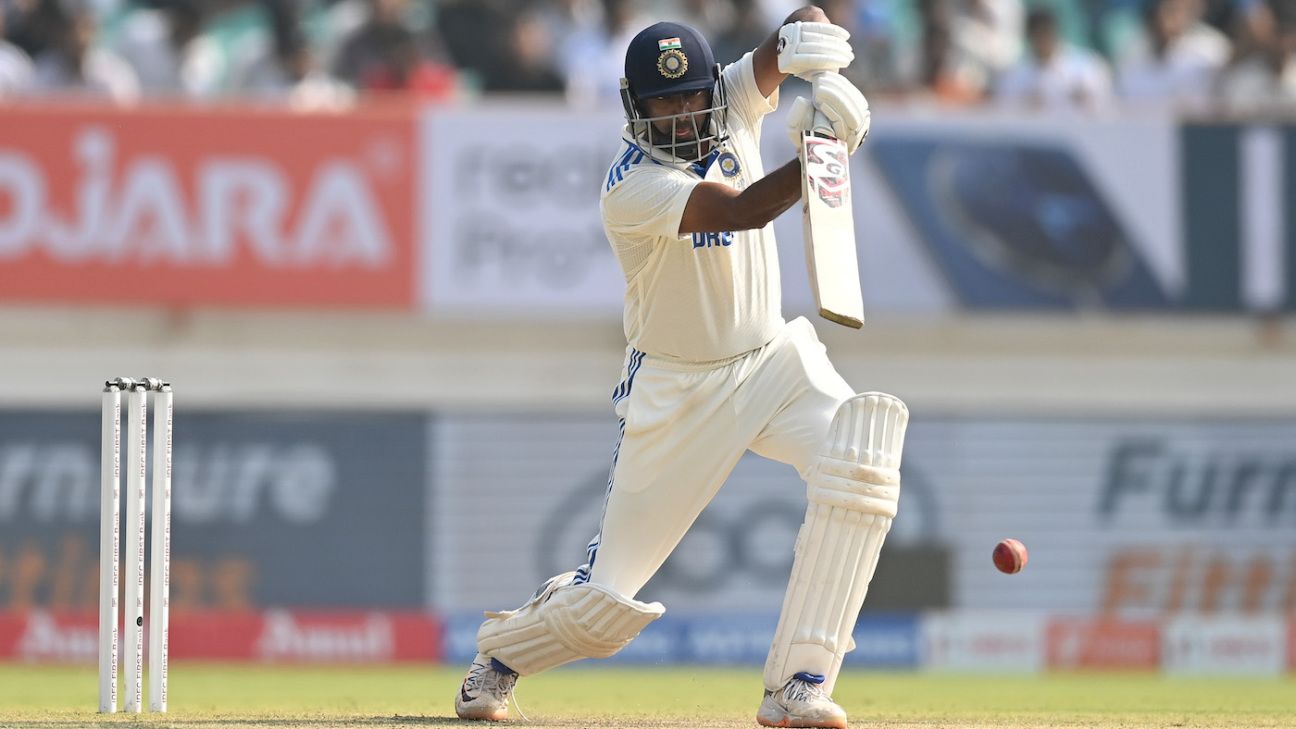The law defines the protected area as “that area of the pitch contained within a rectangle bounded at each end by imaginary lines parallel to the popping creases and 5 ft/1.52 m in front of each, and on the sides by imaginary lines, one each side of the imaginary line joining the centres of the two middle stumps, each parallel to it and 1 ft/30.48 cm from it”.
The penalty runs were awarded to England during the 102nd over of India’s first innings, when Ashwin pushed the ball towards cover and ran down the pitch before being sent back by Dhruv Jurel. Umpire Joel Wilson had a word with Ashwin, who was upset at being penalised, before signalling the penalty runs.
Law 41.14, which concerns batters damaging the pitch, states: “It is unfair to cause deliberate or avoidable damage to the pitch. If the striker enters the protected area in playing or playing at the ball, he/she must move from it immediately thereafter. A batter will be deemed to be causing avoidable damage if either umpire considers that his/her presence on the pitch is without reasonable cause.
“If either batter causes deliberate or avoidable damage to the pitch, other than as in 41.15, at the first instance the umpire seeing the contravention shall, when the ball is dead, inform the other umpire of the occurrence. The bowler’s end umpire shall then warn both batters that the practice is unfair and indicate that this is a first and final warning. This warning shall apply throughout the innings. The umpire shall so inform each incoming batter, inform the captain of the fielding side and, as soon as practicable, the captain of the batting side of what has occurred.
“If there is any further instance of deliberate or avoidable damage to the pitch by any batter in that innings, the umpire seeing the contravention shall, when the ball is dead, inform the other umpire of the occurrence.
“The bowler’s end umpire shall disallow all runs to the batting side, return any not out batter to his/her original end, signal no-ball or wide to the scorers if applicable, and award 5 penalty runs to the fielding side.”
India were 358 for 7 at the time of the incident, having lost both overnight batters Kuldeep Yadav and Ravindra Jadeja within the first hour of play on the second morning. The five-Test series is tied at 1-1 after England won the first match in Hyderabad and India drew level in Visakhapatnam.
